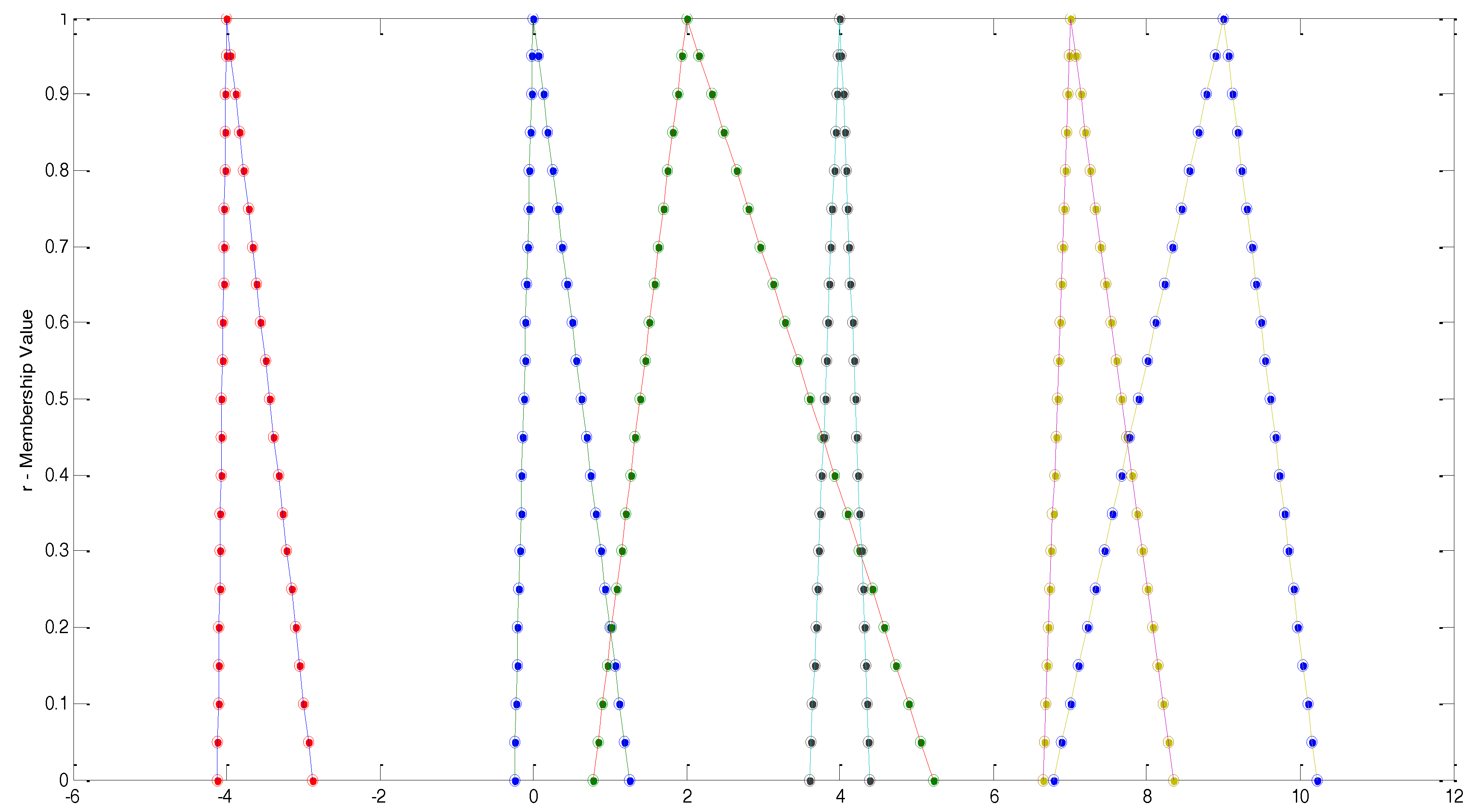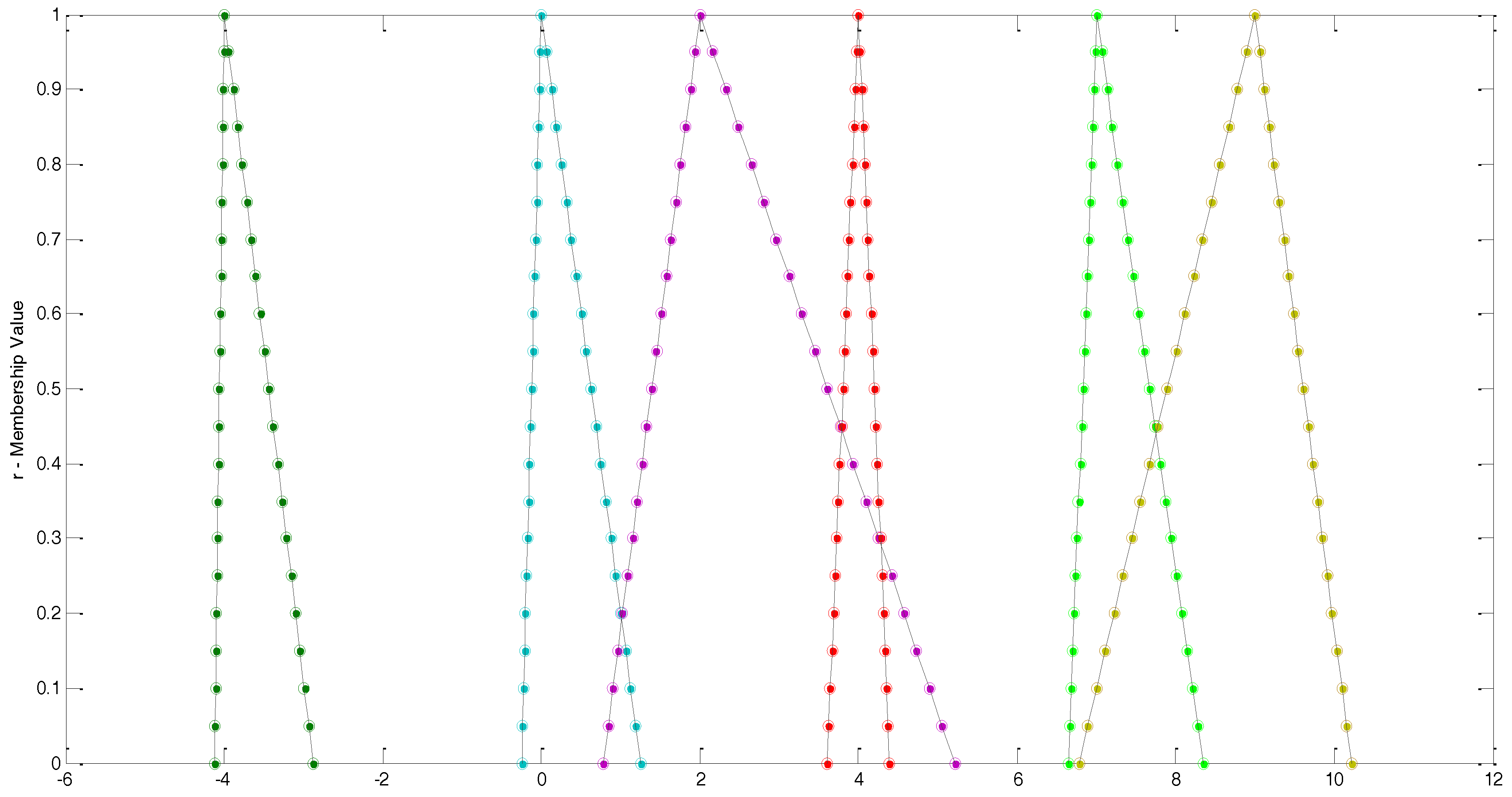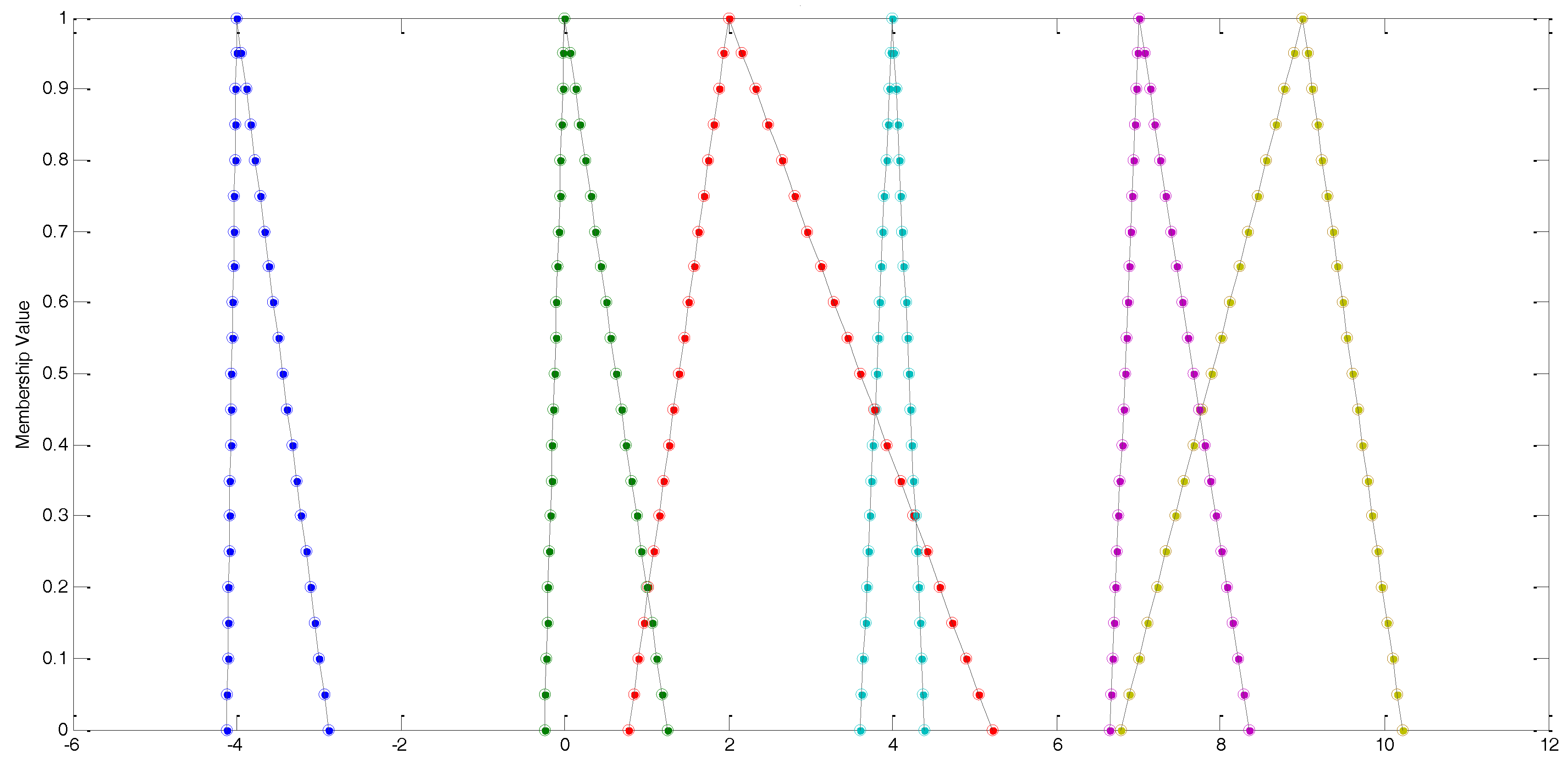1. Introduction
The subject of Fuzzy System of Linear Equations (FSLEs) with a crisp real coefficient matrix and with a vector of fuzzy triangular numbers on the right-hand side arise in many branches of science and technology such as economics, statistics, telecommunications, image processing, physics and even social sciences. In 1965, Zadeh [
1] introduced and investigated the concept of fuzzy numbers that can be used to generalize crisp mathematical concept to fuzzy sets.
There is a vast literature on the investigation of solutions for fuzzy linear systems. Early work in the literature deals with linear equation systems whose coefficient matrix is crisp and the right hand vector is fuzzy. That is known as FSLEs and was first proposed by Friedman et al. [
2]. For computing a solution, they used the embedding method and replaced the original fuzzy
linear system by a
crisp linear system. Later, several authors studied FSLEs. Allahviranloo [
3,
4] used the Jacobi, Gauss–Seidel and Successive over-relaxation (SOR) iterative techniques to solve FSLEs. Dehghan and Hashemi [
5] investigated the existence of a solution provided that the coefficient matrix is strictly diagonally dominant matrix with positive diagonal entries and then applied several iterative methods for solving FSLEs. Ezzati [
6] developed a new method for solving FSLEs by using embedding method and replaced an
FSLEs by two
crisp linear system. Furthermore, Muzziolia et al. [
7] discussed FSLEs in the form of
with
,
being square matrices of fuzzy coefficients and
,
fuzzy number vectors. Abbasbandy and Jafarian [
8] proposed the steepest descent method for solving FSLEs. Ineirat [
9] investigated the numerical handling of the fuzzy linear system of equations (FSLEs) and fully fuzzy linear system of equations (FFSLEs).
Generally, FSLEs is handled under two main headings: square
and nonsquare
forms. Most of the works in the literature dealwith square form. For example, Asady et al. [
10], extended the model of Friedman for
fuzzy linear system to solve general
rectangular fuzzy linear system for
, where the coefficients matrix is crisp and the right-hand side column is a fuzzy number vector. They replaced the original fuzzy linear system
by a crisp linear system
. Moreover, they investigated the conditions for the existence of a fuzzy solution.
Fuzzy elements of this system can be taken as triangular, trapezoidal or generalized fuzzy numbers in general or parametric form. While triangular fuzzy numbers are widely used in earlier works, trapezoidal fuzzy numbers have neglected for along time. Besides, there exist lots of works using the parametric and level cut representation of fuzzy numbers.
The paper is organized as follows: In
Section 2, a fuzzy linear system of equations is introduced. In
Section 3, we present the Jacobi, Gauss–Seidel and SOR iterative methods for solving FSLEs with convergence theorems. The proposed algorithms are implemented using a numerical example with known exact solutions in
Section 4. Conclusions are drawn in
Section 5.
2. Fuzzy Linear System
Definition 1. In Reference [
11]:
An arbitrary fuzzy number in parametric form is represented by an ordered pair of functions which satisfy the following requirements:- (1)
is a bounded left-continuous non-decreasing function over
- (2)
is a bounded left-continuous non-increasing function over .
- (3)
;
Definition 2. In Reference [
12]:
For arbitrary fuzzy numbers and the quantity is called the Hausdorff distance between and .
Definition 3. In Reference [
13]:
The linear systemwhere the coefficients matrix is a crisp matrix and each , is fuzzy number, is called FSLEs. Definition 4. In Reference [
13]:
A fuzzy number vector given by is called (in parametric form) a solution of the FSLEs (1) if Following Friedman [
2] we introduce the notations below:
are determined as follows:
and any
which is not determined by Equation (3) is zero. Using matrix notation, we have
The structure of
implies that
and thus
where
contains the positive elements of
contains the absolute value of the negative elements of
and
An example in the work of Friedman [
2] shows that the matrix
may be singular even if
is nonsingular.
Theorem 1. In Reference [
2]:
The matrix is nonsingular matrixif and only if the matrices and are both nonsingular. Proof. By subtracting the
th column of
, from its
th column for
we obtain
Next, we adding the
row of
to its
th row for
then we obtain
Clearly,
Therefore
if and only if and
These concludes the proof. □
Corollary 1. In Reference [
2]: If a crisp linear system does not have a unique solution, the associated fuzzy linear system does not have one either.
Definition 5. In Reference [
14]:
If is a solution of system (
)
and for each when the inequalities hold, then the solution is called a strong solution of the system (
).
Definition 6. In Reference [
14]:
If is a solution of system (
)
and for some when the inequality hold, then the solution is called a weak solution of the system (4).
Theorem 2. In Reference [
14]:
Let be a nonsingular matrix. Then the system (
)
has a strong solution if and only if .
Theorem 3. In Reference [
14]:
The FSLEs (
)
has a unique strong solution if and only if the following conditions hold:- (1)
The matrices
and are both invertible matrices.
- (2)
4. Numerical Example and Results
To demonstrate the efficiency and accuracy of the proposed iterative techniques, we consider the following numerical example with known exact solution.
Example 1. Consider the non-symmetric fuzzy linear system The extended
matrix is
The exact and approximate solution using the Jacobi, Gauss–Seidel and the SOR iterative schemes are shown in
Figure 1,
Figure 2 and
Figure 3 respectively. The Hausdoeff distance of solutions with
in the Jacobi method is 0.4091 × 10
−3 in the Gauss–Seidel method is 0.4335 × 10
−4 and in the SOR method with
is 5.5611 × 10
−4.






